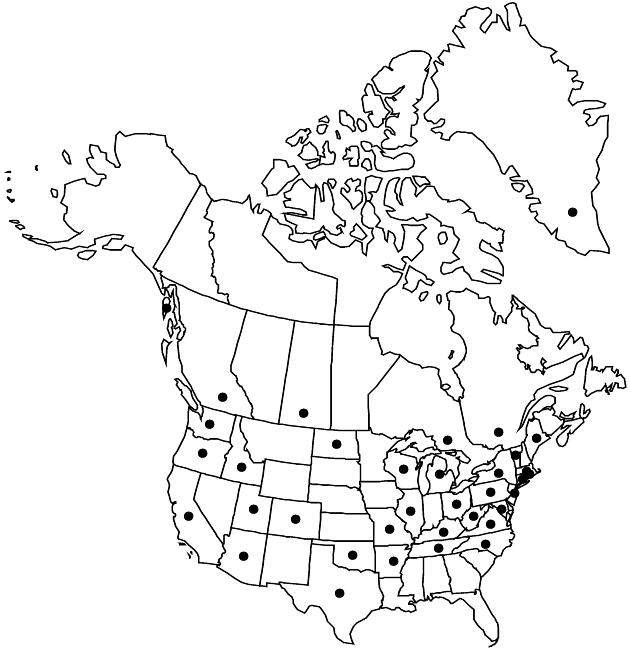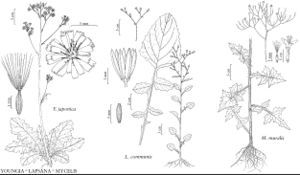Lapsana communis
Sp. Pl. 2: 811. 1753.
Leaves: blades 1–15(–30) × 1–7(–10) cm. Heads 5–25(–100+). Calyculi: bractlets keeled in fruit, 0.5–1 mm. Involucres 5–10 × 3–4 mm. Phyllaries 3–9 mm. Corollas 7–10 mm. Cypselae 3–5 mm. 2n = 12, 14, 16.
Phenology: Flowering Apr–Sep.
Habitat: Mesic woods, sheltered waste areas, roadsides, stream banks
Elevation: 50–1900 m
Distribution

Greenland, B.C., Ont., Que., Sask., Alaska, Ariz., Ark., Calif., Colo., Conn., Idaho, Ill., Ind., Ky., Maine, Md., Mass., Mich., Mo., N.J., N.Y., N.C., N.Dak., Ohio, Okla., Oreg., Pa., R.I., Tenn., Tex., Utah, Vt., Va., Wash., W.Va., Wis., Eurasia.
Discussion
Lapsana communis is widely distributed in North America. It is easily recognized by the abruptly constricted lyrate leaves with relatively large terminal lobes, heads of relatively small flowers with yellow corollas, keeled phyllaries, and epappose cypselae. It is aggressively weedy and often found in shady disturbed sites. The milky juice of L. communis is said to be soothing to sensitive skin, particularly on the nipples of nursing mothers.
Selected References
None.
